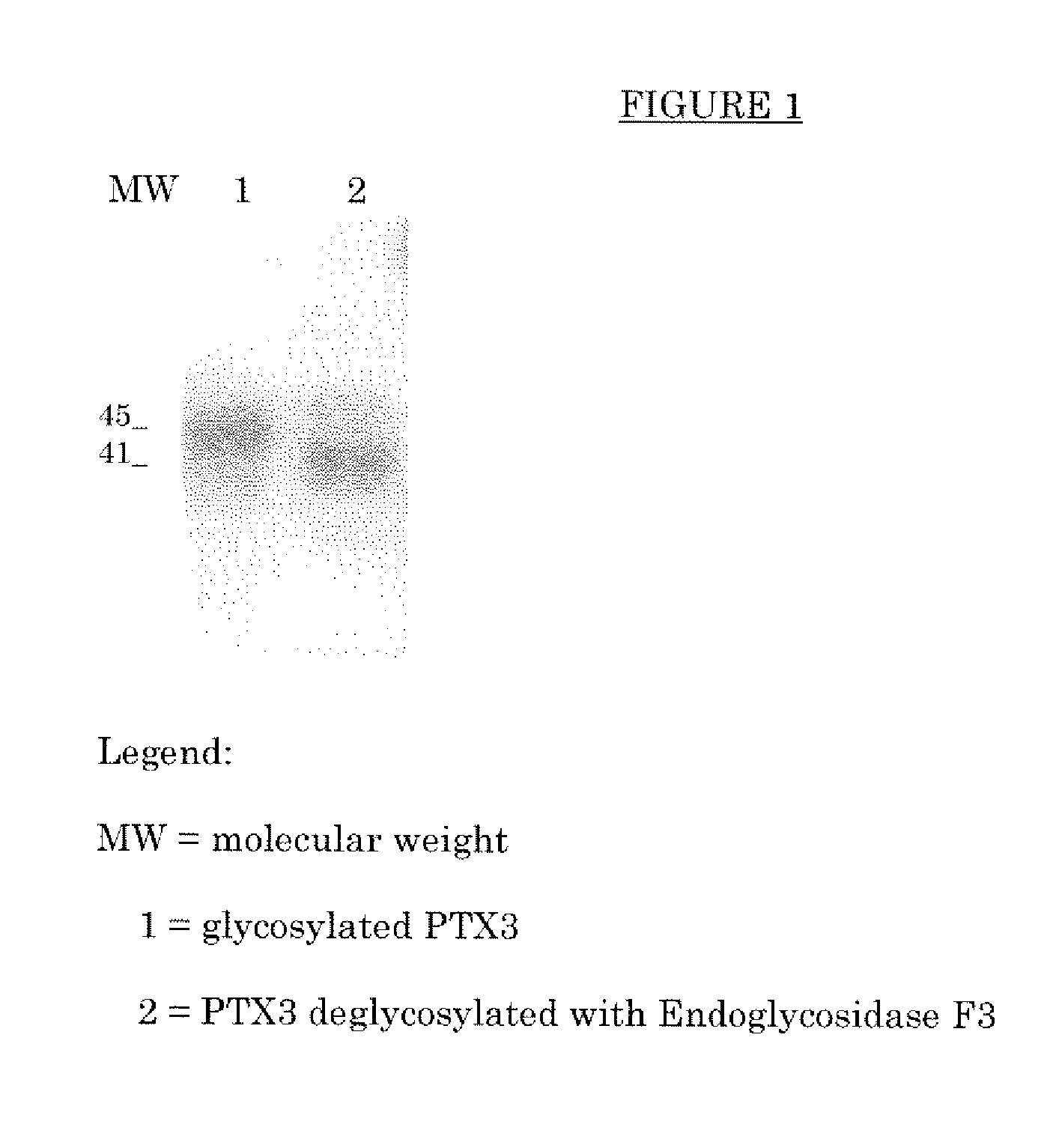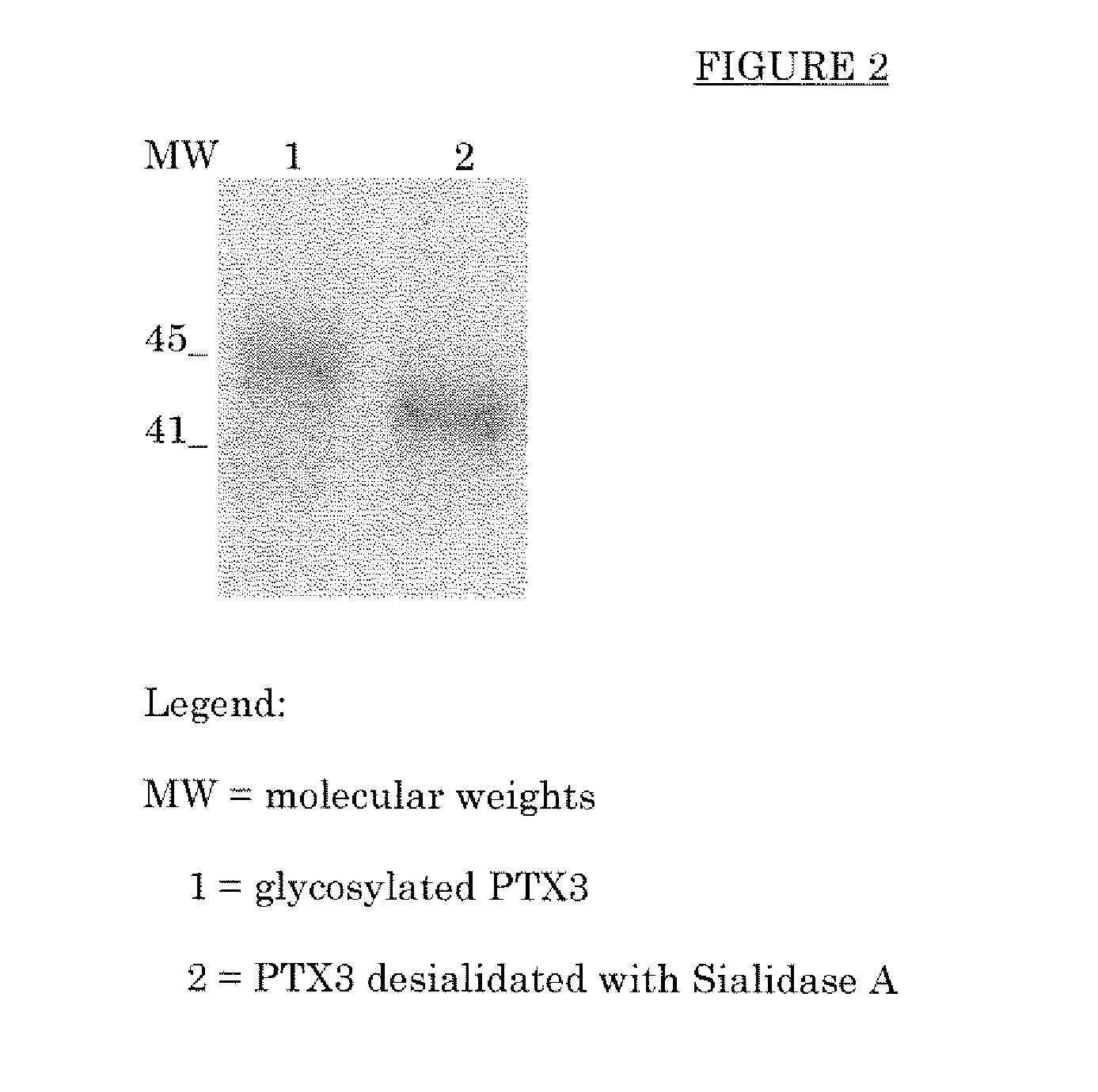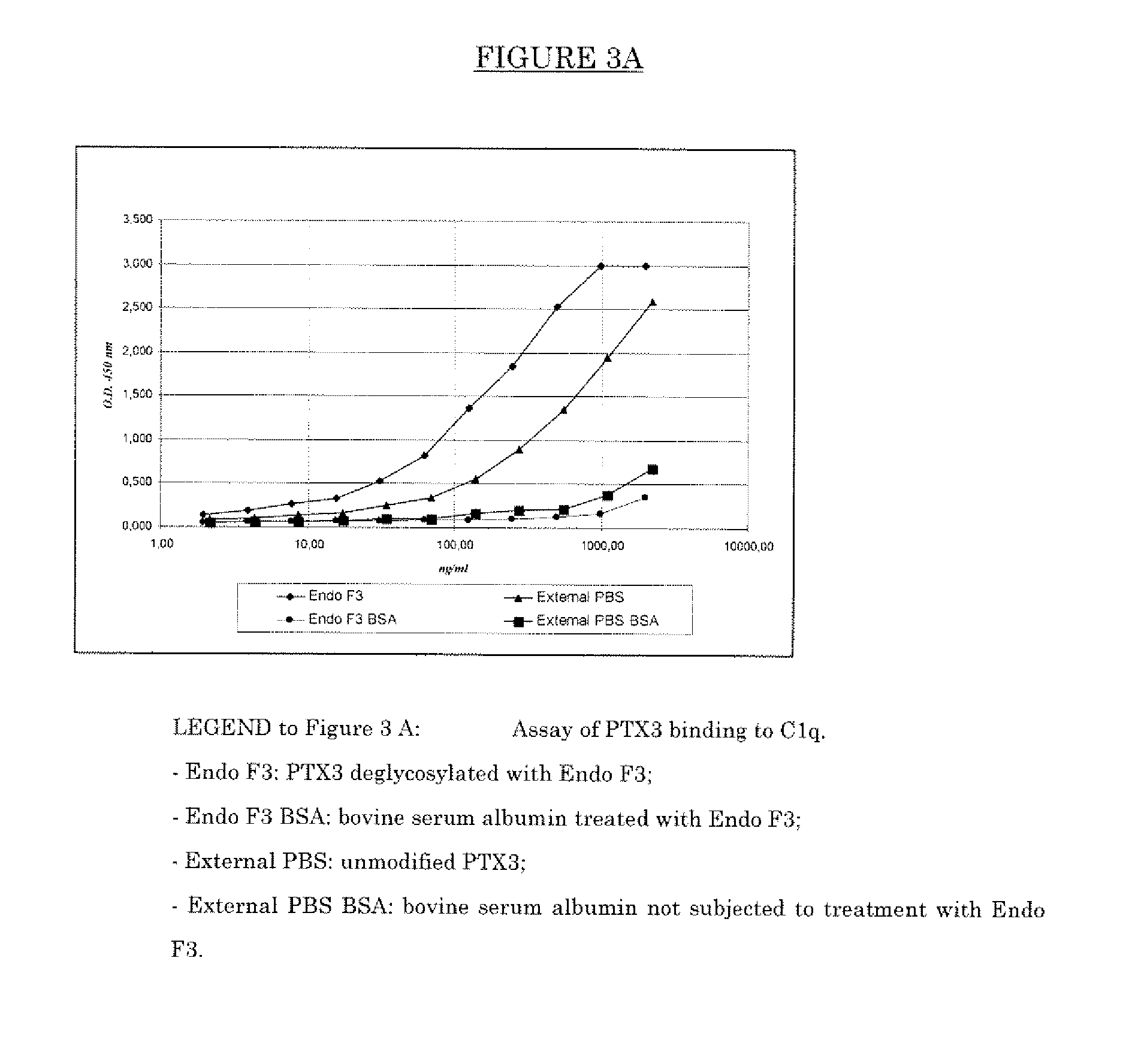Deglycosylated and desialidated long pentraxin PTX3
a technology of deglycosylation and desialitation, which is applied in the direction of antimycotics, depsipeptides, peptide/protein ingredients, etc., can solve the problems of not being able to prepare a functionally active ptx3, s method cannot be used as a medicament, and losing its functional characteristics
- Summary
- Abstract
- Description
- Claims
- Application Information
AI Technical Summary
Benefits of technology
Problems solved by technology
Method used
Image
Examples
example 1
Preparation of Deglycosylated PTX3
[0061]PTX3, purified from the supernatant of CHO cells stably transfected with the plasmid vector pSG5hPTX3 containing the human cDNA of PTX3 (as disclosed in Bottazzi, et al., J. Biol. Chem. 1997; 272: 32817-32823), was treated with the endoglycosylidase EndoF3 for the removal of the entire glycoside chain minus the N-acetylglycosamine residue bound to asparagin 220.
[0062]In particular, PTX3 was incubated with Endoglycosidase F3 known for its selective hydrolysation of the glycoside β bond (1□4) between the two GlcNac residues present in the nucleus of oligosaccharides of the N-linked bi- and triantennary complex type. Endoglycosidase F3 manifests its maximum catalytic activity at acid pH values. On the basis of the solubility characteristics of PTX3 the use of a phosphate buffer at pH 5.5 was optimised. The Endoglycosidase F3 used in the experiment comes from the cDNA of Chryseobacterium (Flavobacterium) merningosepticum expressed in E. coli as re...
example 2
Preparation of Deglycosylated PTX3
[0064]The PTX3-producing CHO cells described in Example 1 were treated with a glycosylation inhibitor of the proteins, such as, for instance, tunicamycin (Sigma Aldrich).
[0065]The deglycosylated PTX3 thus obtained was purified as disclosed in Bottazzi et al. J. Biol Chem 1997; 272: 32817-32823.
[0066]Any other known method for the deglycosylation of proteins or for the production of deglycosylated proteins that does not alter their functional capability is suitable for the purposes of the present invention.
example 3
Preparation of Desialidated PTX3
[0067]PTX3 purified from the supernatant of CHO stably transfected with the plasmid vector pSG5h-PTX3 containing the human cDNA of PTX3 was used.
[0068]PTX3 was treated with Sialidase A. The Sialidase A [α(2→3,6,8,9) neuraminidase] used came from the cDNA of Arthrobacter ureafaciens expressed in E. coli as recombinant protein (SIGMA Aldrich code N8271). The desialidation of PTX3 was also evaluated by means of analysis of its electrophoretic mobility variation by SDS-PAGE (see FIG. 2).
[0069]The desialidated PTX3 thus obtained was purified by gel filtration chromatography (Superose 6 PHARMACIA) for the purposes of removing the glycoside enzymes and the sugars.
[0070]Any other known method for the desialidation of proteins or for the production of desialidated proteins that does not alter their functional capability is suitable for the purposes of the present invention.
PUM
| Property | Measurement | Unit |
|---|---|---|
| molecular weight | aaaaa | aaaaa |
| molecular weight | aaaaa | aaaaa |
| molecular weight | aaaaa | aaaaa |
Abstract
Description
Claims
Application Information
 Login to View More
Login to View More - R&D
- Intellectual Property
- Life Sciences
- Materials
- Tech Scout
- Unparalleled Data Quality
- Higher Quality Content
- 60% Fewer Hallucinations
Browse by: Latest US Patents, China's latest patents, Technical Efficacy Thesaurus, Application Domain, Technology Topic, Popular Technical Reports.
© 2025 PatSnap. All rights reserved.Legal|Privacy policy|Modern Slavery Act Transparency Statement|Sitemap|About US| Contact US: help@patsnap.com



